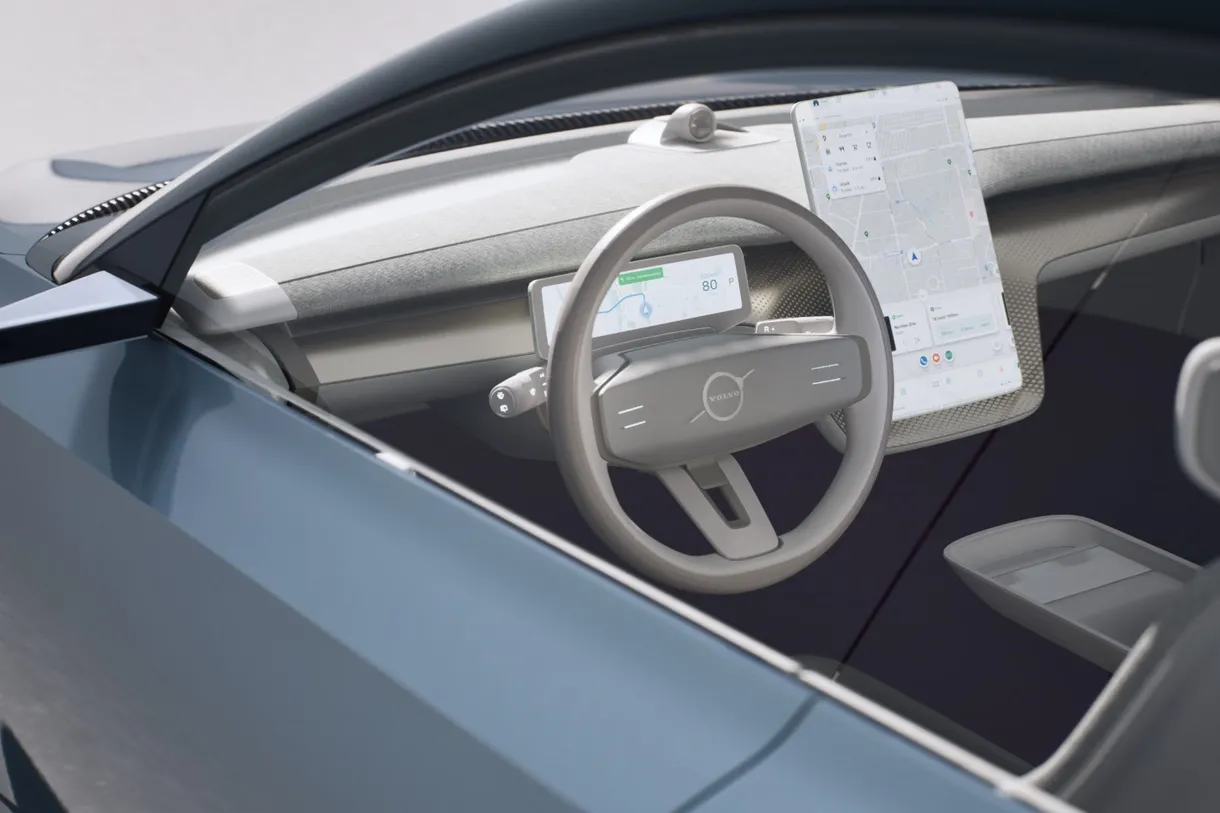Volvo will be the latest automaker to use Epic Games’ Unreal Engine’s graphical brilliance. The Swedish manufacturer announced that it will collaborate with the designer of Fortnite to include “photorealistic imagery” in its next generation of electrified vehicles.

The “human-machine interface” (HMI), which is another way of describing how car owners interact with their vehicle’s software in the context of vehicle ownership, will be at the heart of the Volvo / Epic relationship. Volvo claims that Epic will assist in the development of a platform on which the automaker’s engineers may create software to improve the HMI while preserving the high levels of safety on which Volvo has built its reputation.
“This technology gives us the capability to create responsive, really high-quality visuals that we can play with and layer in information, create realistic representations when needed, all of those kinds of things,” said Thomas Stovicek, the head of the user experience at Volvo Cars. “So it’s really about creating the next generation of HMI for our customers.”
According to Stovicek, the new cooperation will prioritise safety. The brand has earned a reputation for safety and unique designs over the years, and today’s announcement is aimed to emphasise that. Volvo hopes to employ the Unreal Engine to show what the vehicle’s external sensors, such as camera, radar, and, soon, lidar, observe outside the car to drivers without being “overwhelming,” he said.
The collaboration with Epic Gamers will improve other aspects of the game, such as navigation and battery life, as well as the presentation of that information, such as light, colour, and motion visuals, according to Stovicek.
The Unreal Engine, which debuted in the 1998 first-person shooter Unreal, is Epic’s principal tool for creating realistic 3D graphics. It has since been adopted by numerous sectors, most notably the film and television industries, and has been employed in a range of gaming genres.
Epic Games is particularly interested in the automotive business because cars are easier to represent realistically than humans. Epic just announced that it will collaborate with GMC to provide HMI software for the 2022 Hummer EV pickup truck.
Epic, on the other hand, has grown increasingly interested in the automobile business. The theory is straightforward: current cars are essentially software-driven, with a slew of onboard computers relying on touchscreens and digital interfaces to power infotainment systems.

Volvo and Epic declined to identify which vehicles will be the first to use Unreal Engine software or when these features will be rolled out to the rest of the Volvo fleet.
“It became very attractive with the new hardware that’s coming into cars, to think of the car as an additional platform that we should recognize,” said Heiko Wenzel, head of Epic Games’ Detroit lab, be that “from an HMI perspective, from an engagement point, from what game capabilities can bring to the user experiences inside the car.”
Volvo has stated that it intends to sell 600,000 electric vehicles by the middle of the decade and that a battery production facility will be built in Europe by 2026
The company has announced that it is collaborating with Swedish partner Northvolt on a new generation of high-energy-density batteries that will be integrated as a structural component of the vehicle. The new batteries, which will be available after 2025, will allow for a greater driving range — up to 625 miles (1,006 kilometres) between charges — as well as faster charging periods.
Volvo is also bringing software developed in-house to assist speed up the deployment of new updates to the company’s fleet and fixing faults. VolvoCarsOS, the new operating system, will power the company’s next generation of electric vehicles and permit unsupervised highway driving.
The new operating system will serve as an “umbrella system” for all of the vehicle’s underlying technologies, including Android Automotive OS, Blackberry’s QNX, Linux, and AUTOSAR. The new design, according to the business, will include a core computer made up of two Nvidia systems-on-a-chip. The first will concentrate on essential driving duties, while the second will concentrate on semi-autonomous features and more complex capabilities. Volvo plans to combine the two computers into a single system in the future for more efficient processing.
Volvo ultimately wants Epic Games’ assistance in updating its next-generation vehicles, while simultaneously conceding that feature bloat is a serious issue. Of course, there will be far better representations, richer colours, and brand-new 3D animations. However, anything that may cause the driver to become distracted will not be included in the package.

“Nothing’s off the table for us,” Stovicek said. “But of course, what’s important for us is that we introduce it at the right time while making sure that we have a safe driving experience and that we’re not distracting the driver in the wrong way.”
Also read: Apple might finally bring Always-on Display to iPhone 14 Pro and Pro Max


